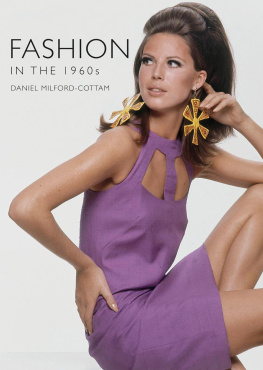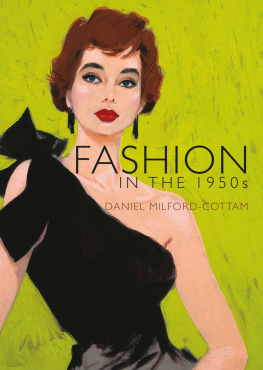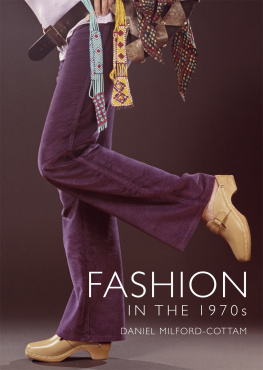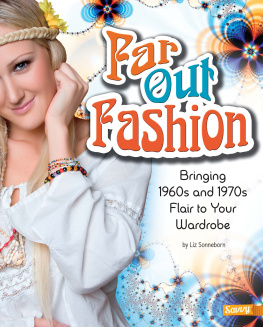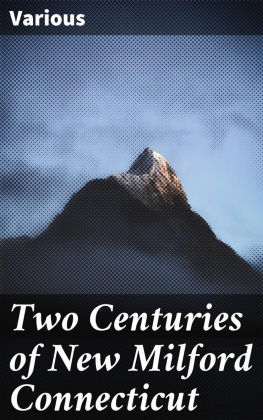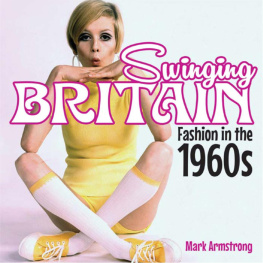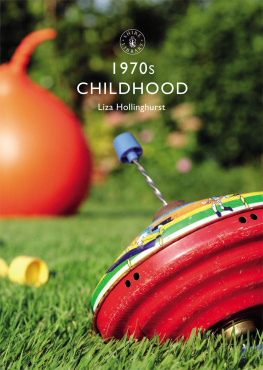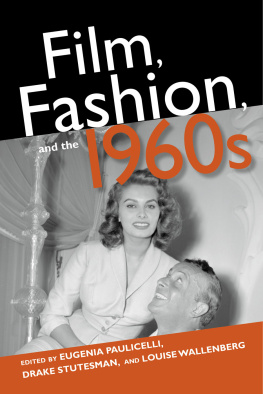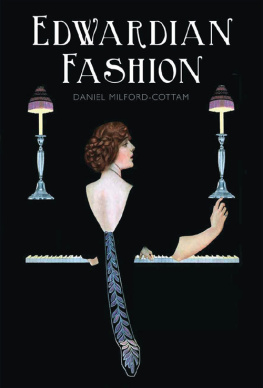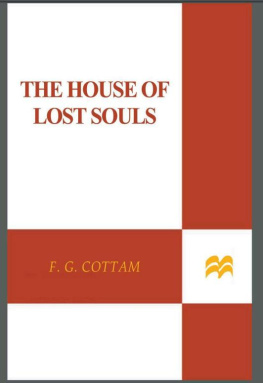Daniel Milford-Cottam - Fashion in the 1960s
Here you can read online Daniel Milford-Cottam - Fashion in the 1960s full text of the book (entire story) in english for free. Download pdf and epub, get meaning, cover and reviews about this ebook. year: 2020, publisher: Bloomsbury Publishing, genre: Non-fiction. Description of the work, (preface) as well as reviews are available. Best literature library LitArk.com created for fans of good reading and offers a wide selection of genres:
Romance novel
Science fiction
Adventure
Detective
Science
History
Home and family
Prose
Art
Politics
Computer
Non-fiction
Religion
Business
Children
Humor
Choose a favorite category and find really read worthwhile books. Enjoy immersion in the world of imagination, feel the emotions of the characters or learn something new for yourself, make an fascinating discovery.
- Book:Fashion in the 1960s
- Author:
- Publisher:Bloomsbury Publishing
- Genre:
- Year:2020
- Rating:3 / 5
- Favourites:Add to favourites
- Your mark:
- 60
- 1
- 2
- 3
- 4
- 5
Fashion in the 1960s: summary, description and annotation
We offer to read an annotation, description, summary or preface (depends on what the author of the book "Fashion in the 1960s" wrote himself). If you haven't found the necessary information about the book — write in the comments, we will try to find it.
Fashion in the 1960s — read online for free the complete book (whole text) full work
Below is the text of the book, divided by pages. System saving the place of the last page read, allows you to conveniently read the book "Fashion in the 1960s" online for free, without having to search again every time where you left off. Put a bookmark, and you can go to the page where you finished reading at any time.
Font size:
Interval:
Bookmark:
- Cover
- Title Page
- Table of Contents


T HE S IXTIES BEGAN quietly, barely distinguishable from the previous decade. Womens hemlines stayed at the knee. Mens wardrobes mostly avoided colour and pattern. Seeds planted in the previous decade were slowly but steadily growing. At first, all seemed stable until suddenly, the baby boom of the post-war years exploded. 1950s teenagers became independent adults. While this generation of young people was not yet in charge of world affairs, they were numerous enough to be heard. Their collective voice gave popularity to the bands they decreed smashing, the fashions that were fab, and visibility to the issues they chose to highlight. In addition to this, they were more likely to listen to each other, or to people they felt were on their level, rather than to older authority figures firmly defining the generation gap.
The driving force behind 1960s fashion was youth and innovation, which the miniskirt epitomised. Young womens hemlines had gradually been rising above the knee since 1961, offering increased freedom of movement. For many young designers, such as Mary Quant, John Bates, and Andr Courrges, the miniskirt became one of their signature designs. By 1966, short-short skirts might only cover the upper thigh, and by 1969, the shortest miniskirts barely covered the crotch. Coco Chanel, who famously encouraged the original shortening of skirts in the 1920s, was particularly outspoken in her criticism, declaring miniskirts disgusting, This was a common attitude from many long-established designers, who saw young fashion as faddish, ephemeral, and easily dismissed. One notable exception was Pierre Cardin, who had enthusiastically advocated new materials, inspirations, and design concepts since opening his Paris couture house in 1950.
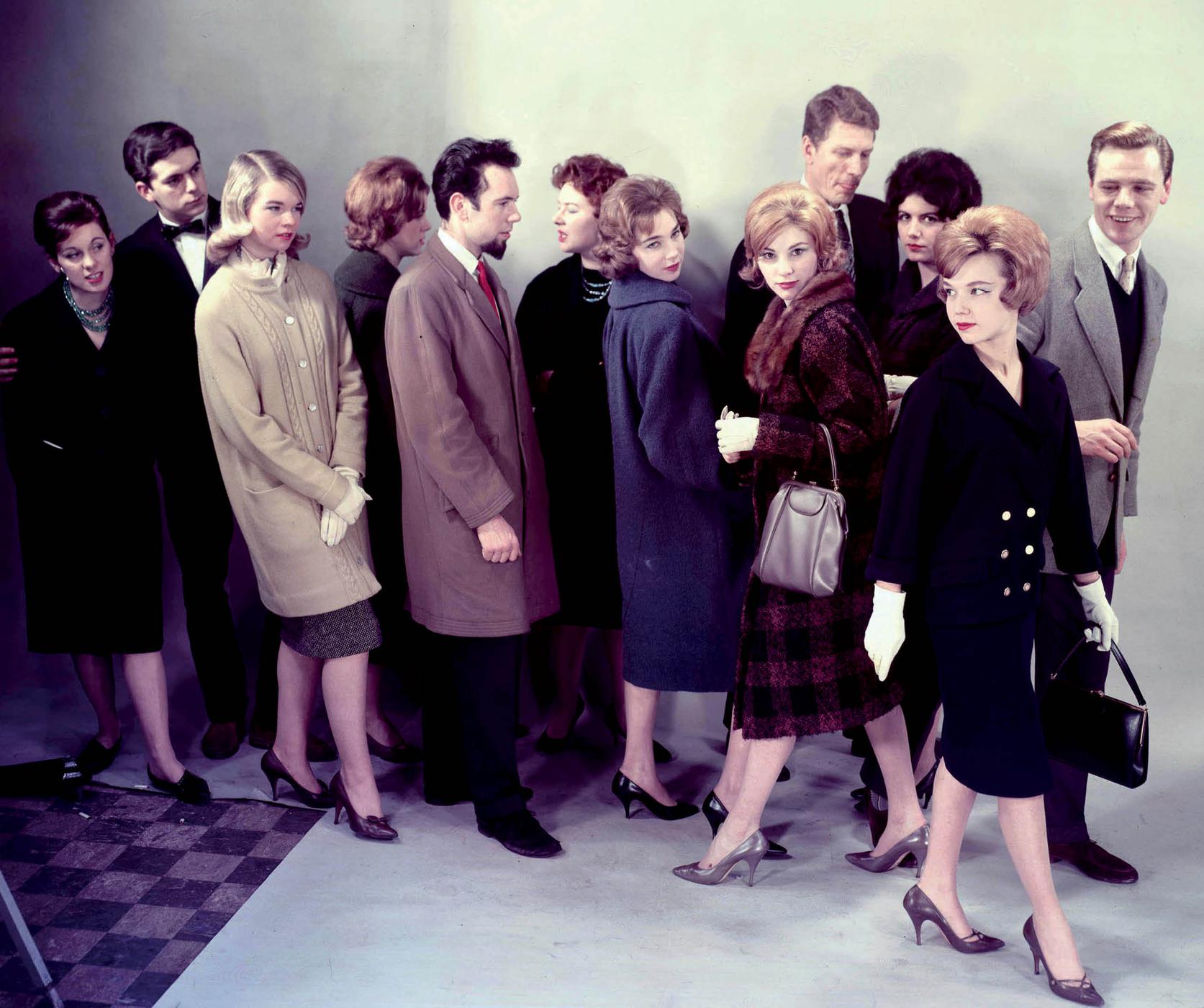
Early Sixties men and women often wore sensible, tailored clothing in neutral colours. Hats were less popular, but gloves and handbags remained essential for conservative elegance. One young man has a beard, usually reserved for artistic or bohemian types.
The decade saw a new generation of innovative designers bringing youth and talent into the Paris fashion industry. Andr Courrges opened in 1961, swiftly becoming famous for his futuristic designs. A former designer for the famously austere and refined Cristbal Balenciaga, Courrgess crisp trouser-suits and minidresses showed the influence of his former mentor while also being ultra-modern and unique. In January 1962, 25-year-old Yves Saint Laurent opened his eagerly anticipated couture house. Formerly head designer for Dior, Saint Laurent was sacked in 1960 after presenting a controversial Beat collection inspired by Parisian art students. Black sweaters, leather jackets and knee boots, no matter how luxurious, were not considered haute couture enough for Diors clientele. Saint Laurent successfully sued for breach of contract, and many Dior clients, models and workers followed him to his new house. Also from Balenciaga came Emanuel Ungaro, who opened his house in 1965 in collaboration with the Swiss artist Sonia Knapp, and Emmanuelle Khanh, a former model who, with Christiane Bailly, launched her first label in 1962. Khanh was a crateur (a prt--porter , or ready-to-wear-focused designer) rather than a couturier. Her international success meant that by 1964, she was credited with bringing status to French ready-to-wear, and was seen as Pariss answer to Mary Quant. When he opened his first Rive Gauche boutique in September 1966, Saint Laurent became the first Paris couturier to launch a full prt--porter collection. His example was followed by Courrges in 1967, Givenchy and Ungaro in 1968, and others. Alongside crateurs such as Khanh, Karl Lagerfeld at Chlo, and Michle Rosier, these ventures established Paris as a serious player in ready-to-wear fashion as w ell as couture.
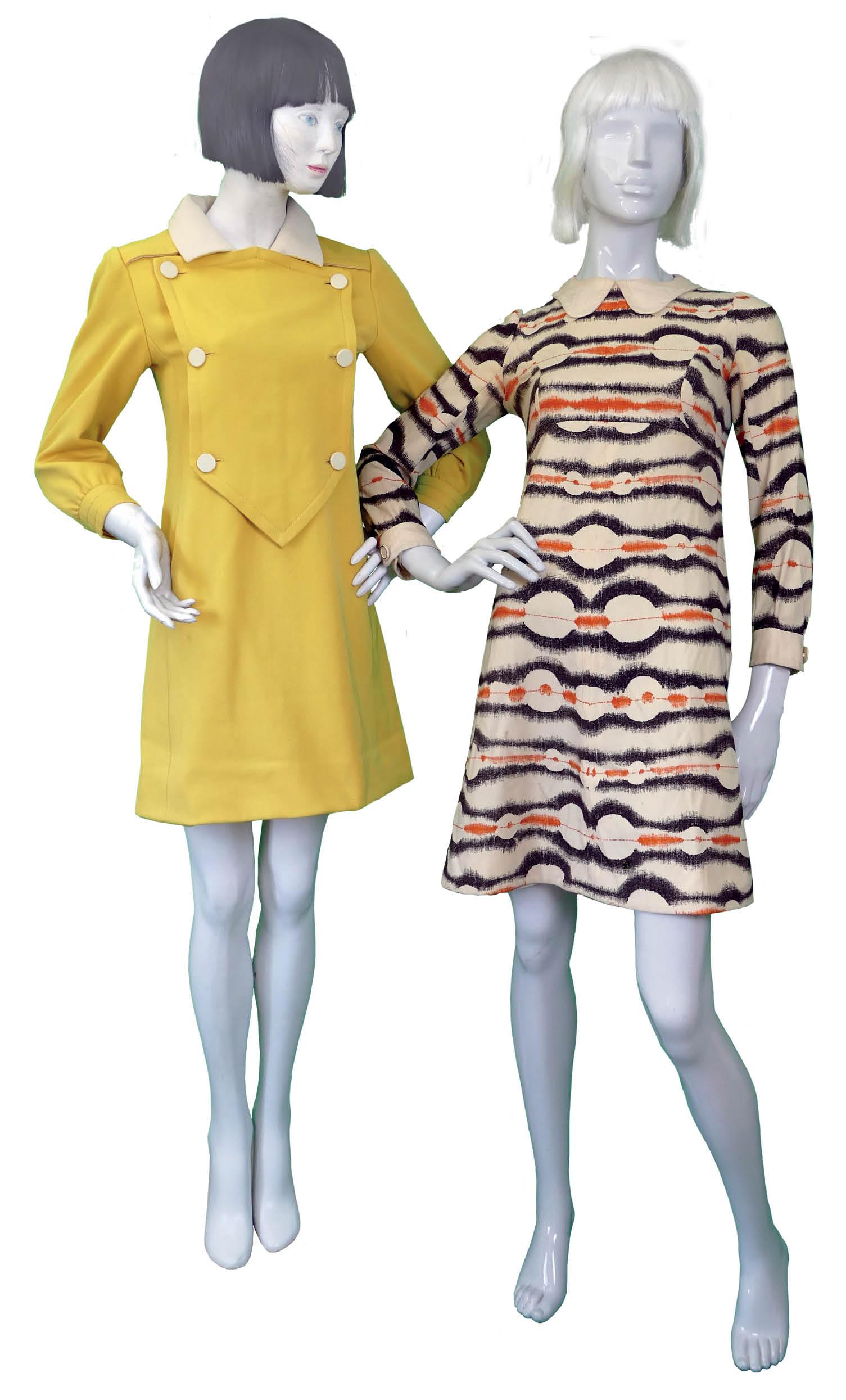
These two 196768 tailored wool minidresses by Guy Laroche (left) and Emanuel Ungaro (right) show how Paris couture interpreted young fashion. Ungaros 1968 dress, showcasing a Sonia Knapp textile, is an early ready-to-wear piece from his Parallle boutique.
While established couture houses held influence, most publicity went to brand-new names with excitingly fresh clothes. For London, this meant a whole new generation of art-school graduates entering the fashion industry. Rather than be invisibly employed as in-house designers creating conservative clothing for established brands, many went straight into business for themselves, opening boutiques and launching labels despite their relative lack of experience. Among those who went on to succeed with designs for young people just like themselves were Marion Foale and Sally Tuffin, Sylvia Ayton, Zandra Rhodes, Gerald McCann, and Ossie Clark. Their originality made Londons boutique scene dramatically successful, drawing international buyers, particularly from the United States. This threatened Pariss jealously guarded claim to be the fashion centr e of the world.

This 1967 denim shorts outfit was designed by Sylvia Ayton to showcase Zandra Rhodess Teddy-Bear print, and sold through their London boutique.
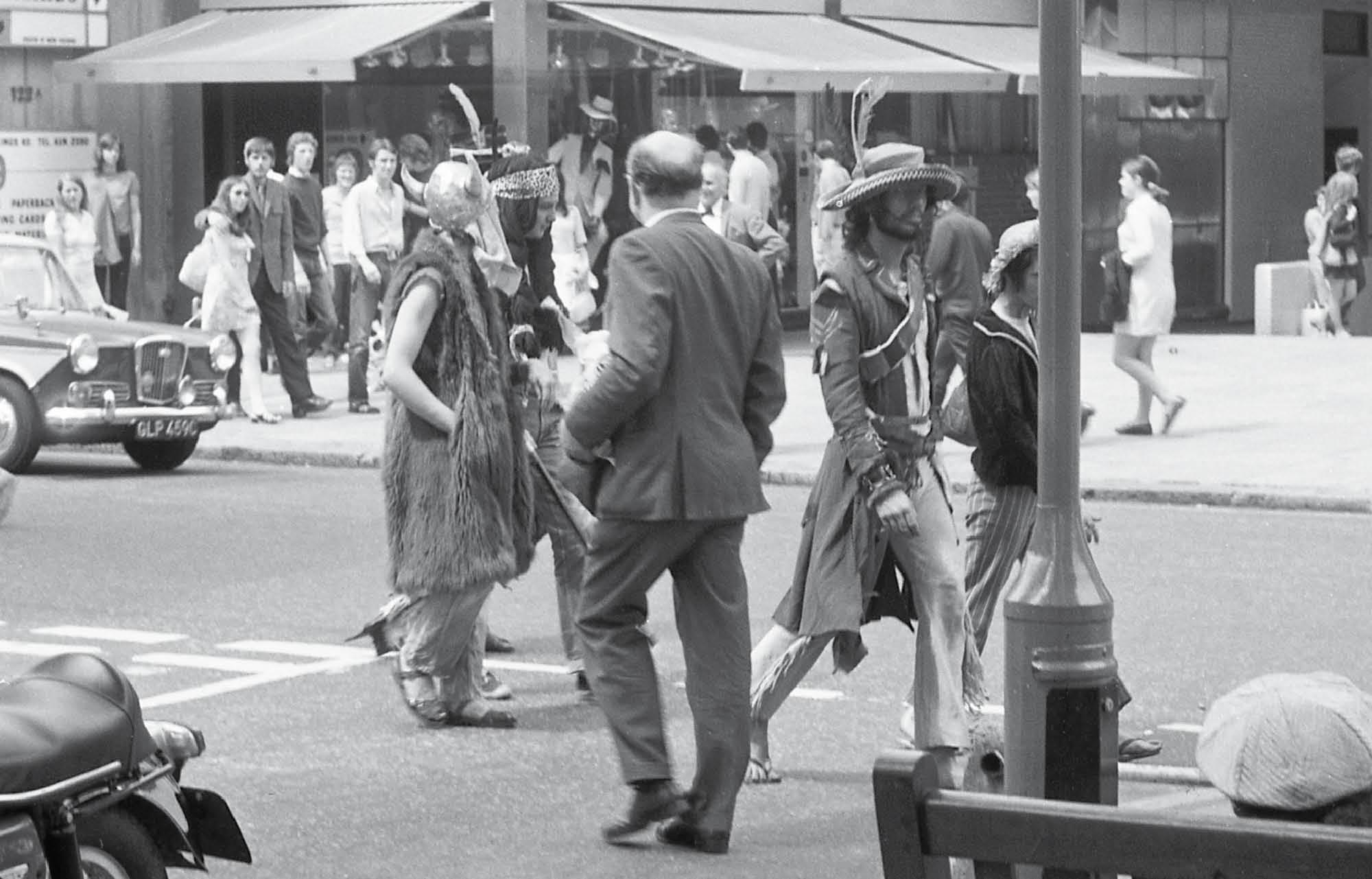
London, 1969: in addition to its many boutiques, for many young Londoners, Kings Road was an unofficial catwalk for showing off new clothes and seeing outrageous outfits. Photograph by John Hendy.
America and Italy were also leading fashion centres. Italy was renowned for impeccable tailoring, fine textiles, and beautiful accessories, and their resort and leisure wear was particularly highly regarded, represented by silk blouses, jersey dresses, beachwear and even ski-suits in distinctive custom prints by Emilio Pucci and others. The widely emulated Pucci prints were particularly popular in America and Australia. At first, America was mostly enthusiastic for elegant ladylike dressing as exemplified by Jacqueline Kennedy, their First Lady from 196163 , and less receptive to youthful fashion. The cautious American market preferred to import European designs by Khanh, Quant, Foale & Tuffin and McCann rather than produce its own innovative young clothing. A notable exception was Rudi Gernreich, who, despite the criticism of his peers, was one of the first designers to offer all-American miniskirts in 1967 several years after their European debut. The Paraphernalia boutique, which opened in New York in 1965, was one of the few outlets where radical American young fashion challenged London creativity. Among its more unique designs by Betsey Johnson, Diana Dew, Michael Mott, Deanna Littell, and others, were plastic garments, glow-in-the-dark prints, dresses with battery-operated light-up elements and even a paper dress impregnated with seeds that instantly flowered when moistened. Many of these garments were intended to be worn once or twice, and then thrown away. Disposable fashion was one of the decades more not orious aspects.
Font size:
Interval:
Bookmark:
Similar books «Fashion in the 1960s»
Look at similar books to Fashion in the 1960s. We have selected literature similar in name and meaning in the hope of providing readers with more options to find new, interesting, not yet read works.
Discussion, reviews of the book Fashion in the 1960s and just readers' own opinions. Leave your comments, write what you think about the work, its meaning or the main characters. Specify what exactly you liked and what you didn't like, and why you think so.

